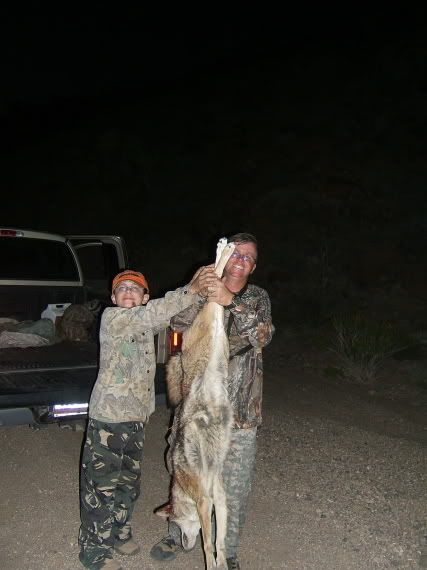Mule Deer Management
From antler-point restrictions to reduced hunting opportunities, it seems as if everyone with a stake in Washington and Oregon mule deer herds has a theory as to what works best. And the debate rages on …
By Doug Rose
What is the best way to manage mule deer? It’s a question that is debated fiercely across mule deer country today. The topic is engaged in sporting goods stores amongst hunters buying licenses and bullets. And it is also discussed in the hearing rooms where wildlife biologists and hunters testify before state fish and wildlife commissions.
Of course, it is the wrong question.
There are several proven strategies to manage mule deer, as there are for other antlered big game. They can be managed to create the most opportunity for the largest number of hunters. That is basically the way Washington has managed deer in recent years.
On the other hand, higher success rates and more older, branched-antler deer can be produced by limiting the number of hunters through permit hunts and other regulations. That is the way Oregon has managed deer for more than a decade.
Some two decades ago, big-game managers often employed a mixture of approaches. This allowed the bulk of hunters a chance to hunt each year, but biologists also reserved a handful of areas where permit hunts and more restrictive regulations provided hunters with opportunities to pursue trophy animals. But as mule deer numbers declined in the Pacific Northwest, as they have all across the West, agencies have been forced to modify regulations. The new management plans have come under intense public scrutiny and have often become controversial.

Jesse Laird – Warner Valley, 2003 season. Photo courtesy of Jesse Laird
|
In recent years, no component of mule deer management has been more contentious than the use of antler-point restrictions. And nowhere is it more controversial than in Washington’s Okanogan County, site of the Evergreen State’s most productive mule deer herd.
Three-point regulations have been in effect for all mule deer in Washington since 1997. That is, for a mule deer buck to be legal to shoot, it must have three measurable points on at least one side of its rack.
Mike Caryl, whose Cascade Outfitters shop in Omak is filled with mule and white-tailed deer mounts, supports the point restrictions. “I’ve lived here 47 years – my entire life,” he said. “We’re typically seeing a lot more 3- and 4-point bucks in the winter, after the end of the season, than we did 10 years, even 20 years ago. I think any local will tell you that.”
On the other hand, many wildlife biologists maintain that point restrictions are not the best way to manage deer other than as a short-term stimulus when buck populations are depressed.
“In general, point regulations result in illegal kill of sub-legal bucks, hunters’ expectations of a quality experience are not realized, and both the total numbers of legal bucks available and the total harvest decrease,” claimed the Oregon Department of Fish and Wildlife’s 2003 Mule deer management plan.
WASHINGTON’S 3-POINT REGULATIONS
Until 1997, modern firearms mule deer hunters could shoot any buck in most eastern Washington game management units (GMUs). Although mule deer numbers were in decline, hunters continued to tag an essentially stable number of deer. Between 1987 and 1991, the average mule deer harvest in Washington was 18,400. However, significant winter mortality in 1992, followed by additional winterkill in 1994, reduced the population significantly. Harvest fell to 11,261 in 1993 and to 11,063 in 1995.
The worst was yet to come. During the exceptionally hard winter of 1996-1997, more than 60 percent of the deer in some areas of eastern Washington died. The Washington Department of Fish and Wildlife responded by imposing 3-point regulations region-wide. It also eliminated doe tags and reduced the season to nine early October days. The combination of fewer deer and tighter regulations predictably resulted in a reduced harvest. Only 5,196 mule deer were tagged in 1997 and 5,435 in 1998.
The declines in deer and hunter opportunity were probably most acutely felt in Okanogan County. Long heralded as hallowed ground amongst Evergreen State mule deer hunters, the Okanogan Highlands and Methow Valley had everything a mule deer could want. There were no elk to compete with the herd for food or space, as was the case in other areas, and the region’s development remained relatively light despite recent human population increases.
As a migratory herd, Okanogan deer enjoy quality summer range in the Pasayten and other high country areas, and they had abundant winter range in the valley. Over the years, GMUs such as Pearrygin, Alta and Chewuch became legendary among veteran hunters, and the hunting season provided a dependable and important economic stimulus to the county.
THE CASE FOR THREE POINTS
In the years since more restrictive hunting regulations were imposed, the Methow Valley deer population has rebounded impressively. Post-season buck escapements in December 1999 ranged from 25 to 30 bucks per 100 does, significantly above the management objective of 15:100. The spring fawn survey the following April observed 60 fawns per 100 does, which was also above the long-term average.
That winter, post-season buck numbers were 27:100, and 30 percent of those were mature bucks. During the 2002 winter survey, there were 24 bucks per 100 does, and the spring fawn count ranged between 30 and 40. Not surprisingly, the hunter ratios reflected the expansion of the herd, and during the 2000 season 2,434 deer were killed in the county.
“We’re seeing real nice benefits from the 3-point regulations,” said Brian Varrelman, a long time Okanogan County big-game guide. Varrelman’s Sawtooth Outfitters (509-923-2548; www.altalake.com) conducts horseback pack-and-drop trips deep into the Pasayten, Alta and Manson units. He says that the regulations have even had an effect in the distant, high-elevation areas where he packs his clients. “There is a noticeable difference in the quality of the bucks,” he said. Varrelman adds that many of his steady customers have hunted the same camps for years. He says that during the any-buck years, smaller racks were common. Now many bucks in the 25- to 30-inch range are taken. “They are tickled to death.”
“As far as antler-point restrictions are concerned,” said the Cascade Outfitters’ (509-826-4140) Dick Caryl, “I am a firm believer in their positive affects. But not for creating trophy deer.” Caryl believes they limit harvest of not just younger deer but all bucks, because they require a hunter to take more time and make sure an animal is legal before shooting. “It should be used as an escapement tool. There are too many hunters these days, and they are too good, and there are too many roads. The pressure on them is too great and they can’t take that kind of impact.” Moreover, Caryl says that his experience with the deer mounts in his shop have made him think that 3-point regulations should be extended to white-tailed deer as well. “It’s surprising how many people call a mule deer a whitetail and a whitetail a mule deer.” He thinks a 3-point rule makes sense in heavily hunted areas where both species of deer are available.
A BIOLOGIST’S PERSPECTIVE
Several years ago, the WDFW proposed to eliminate the 3-point regulation for mule deer, arguing that they had accomplished their purpose of increasing the buck population and that they were no longer necessary. There was immediate negative reaction, however, from many eastern Washington hunters, especially in the Okanogan. The WDFW subsequently backed off the proposal, and its 2003 Wildlife Management Plan states: “These guidelines would allow continued public debate over the current three-point restrictions for mule deer along the east slopes of the Cascade mountains and in north central Washington, as well as other preferences of hunters regarding seasons, regulations, while maintaining the minimum population of 15 bucks per 100 does after the hunting season.”
However, many wildlife biologists are not fond of antler restrictions as a long-term management strategy. I recently asked WDFW’s Okanogan District wildlife biologist Scott Fitkin for his perspective on the issue. He spoke freely, but emphasized that his views are his own and did not necessarily reflect the position of the department.
“My personal bias is that I’m not a big fan of point restrictions,” Fitkin said. “I don’t like focusing hunting on older animals. I’d prefer to let the older bucks do most of the breeding.”
Fitkin says that mature bucks – the ones that are the only legal targets under antler-point regulations – tend to successfully breed during a doe’s first estrus cycle in the fall better than younger deer. Deer that breed early tend to have fawns earlier, which, in turn, grow larger and survive winter better than later fawns. In addition, Fitkin says research suggests that “synchronous breeding,” where the majority of the does conceive at the same time, also gives fawns an advantage against predators in the spring because it “floods” the area with young deer.
Despite widespread public perception that point restrictions were the driving force behind the recovery of Okanogan deer, Fitkin says other factors were probably more important. “We haven’t had a hard winter since ’96-’97,” he said. “And in terms of buck numbers, it is how long and where you place the season that makes the difference.” He believes that reducing the season to nine days and having it in early October, when many of the deer were still on summer range where they are harder to hunt, had more to do with the population expansion than point restrictions. He points out that last year, after the season was expanded to 14 days, buck escapement fell to 18 per 100 does, down from 26 in 2002.
In addition, Fitkin says that Okanogan County still has many areas where mule deer can escape the efforts of casual hunters. “It depends on how much access there is,” he said. “If we were all roaded like some areas, there would hardly be any 3-pointers standing at the end of the season.”
According to Fitkin, there are also social as well as biological implications with antler-point restrictions. For example, under current regulations a one-inch eye guard can count as a legal third point. This can make for difficult identification under hunting conditions and poor decisions can occur in the excitement of the moment. “Every year we find a fair number of two-points shot and left in the field,” he said. Fitkin says that his predecessor in the Okanogan, Mark Quinn, didn’t like the regulation because of this potential for making “criminals” out of honest hunters. “For young hunters, especially, it can turn the excitement of the first day into a nightmare,” Fitkin said. “An experience like that may turn a young person off hunting permanently.”
OREGON DOES IT DIFFERENTLY
When Oregon mule deer populations consistently fell below management targets in the late 1980s, the Oregon Department of Fish and Wildlife created a new mule deer plan. It established a baseline management objective of 12 post-season bucks region-wide. But rather than impose point restrictions to rebuild populations, it changed all eastern Oregon wildlife management units to controlled hunts. For the first time in many years, an Oregon mule deer hunter could not assume they would be able to purchase a tag every year, and the new regulations required hunters to determine the area they wanted to hunt well in advance of the season. Not surprisingly, this was a highly unpopular move initially.
The ODFW cites its experience in the Steens Mountain WMU in its argument against antler-point restrictions. Historically well known for broad-beamed trophies, Steens Mountain was managed under open entry, 4-point-or-better regulations between 1978 and 1986. According to the agency, the incidence of poaching increased significantly after point restrictions were implemented, and the number of 4-point bucks available for harvest declined 30 percent. By the end of the 12-year period of the regulations, the legal buck harvest in the unit had fallen 50 percent.
“Point regulations are often suggested as a way to increase the number of older bucks in a deer population,” the ODFW’s 2003 deer management plan observed. “In theory, point regulations are designed to increase the number of older bucks in the population by limiting harvest to only larger bucks, allowing younger bucks to mature. However, past experience in Oregon has shown that three-point or four-point regulations do not produce additional older bucks in an area unless hunters’ numbers are seriously limited.”
Has Oregon’s adoption of controlled hunts worked? Only 16 of 47 eastern Oregon WMUs were at or above their MOs at the conclusion of the 1990 season, the year of the last general-season hunt. Twelve of these units were already managed as controlled hunts, because of population problems that began in the early 1980s. The following year, the first with region-wide limited entry, hunter numbers fell from 104,745 to 90,661. At the end of the first year, 37 of the units were at or slightly below MOs for bucks. At the end of the 2001 season, 33 of the 47 units were at or above the management objectives.
Currently, Oregon mule deer hunters can choose from three different management regimes when selecting a controlled hunt. The majority are managed for 12 bucks per 100 post-season does, and the goal in these areas is to provide the greatest hunter opportunity. About 60 percent of the harvest in these units consists of yearling bucks, which are typically spikes or forkhorns. Fewer tags are issued for units that have a MO of 15:100; these WMUs usually yield between 40 percent and 60 percent older bucks. The WMUs that have identified post-season buck-to-doe ratio of 25:100 are managed for “trophy” opportunity; permit numbers are small and most bucks taken are adult deer.
THE BOTTOM LINE
All of the hunters and biologists cited above care deeply about the health of mule deer populations and speak from a wealth of experience. It is obviously possible for well-meaning and informed people to come down on opposite sides of a debate over point restrictions or other wildlife management issues.
There are areas, however, where agreement can be achieved. The Oregon experience with controlled hunts, where the average mule deer success rate is in the 40 percent range, shows that limiting hunters improves animal numbers and produces higher harvest ratios. But it is equally clear that many and perhaps most hunters do not like permit hunts and accept more crowding and lower odds in return for being able to hunt every year. In addition, biologists and expert hunters agree that the most impressive mule deer tend to come from places that are hard to get to and where the animals can survive long enough to produce impressive headgear.
As the late Erwin Bauer wrote in Mule Deer – Behavior, Ecology, Conservation, there is no panacea for every situation:
“Game managers in state game and fish departments have become increasingly aware that each game species, including the mule deer, cannot be managed properly with a single strategy for the entire state. The deer in different places, now called management areas, live in unique habitats. For example, severe winters may have a more devastating effect on the animals in one part of a state than in another. Adequate rainfall would be more essential in one area than another. And reproductive success would vary with local predation. Better deer managers now take all of these factors into consideration when they plan future hunting seasons and bag limits, area by area.”




 but I’m glad you came for a visit. If you have an interest in MULE DEER, you came to the right place. And we’re only just getting started. This website will continue to get better.
but I’m glad you came for a visit. If you have an interest in MULE DEER, you came to the right place. And we’re only just getting started. This website will continue to get better.




